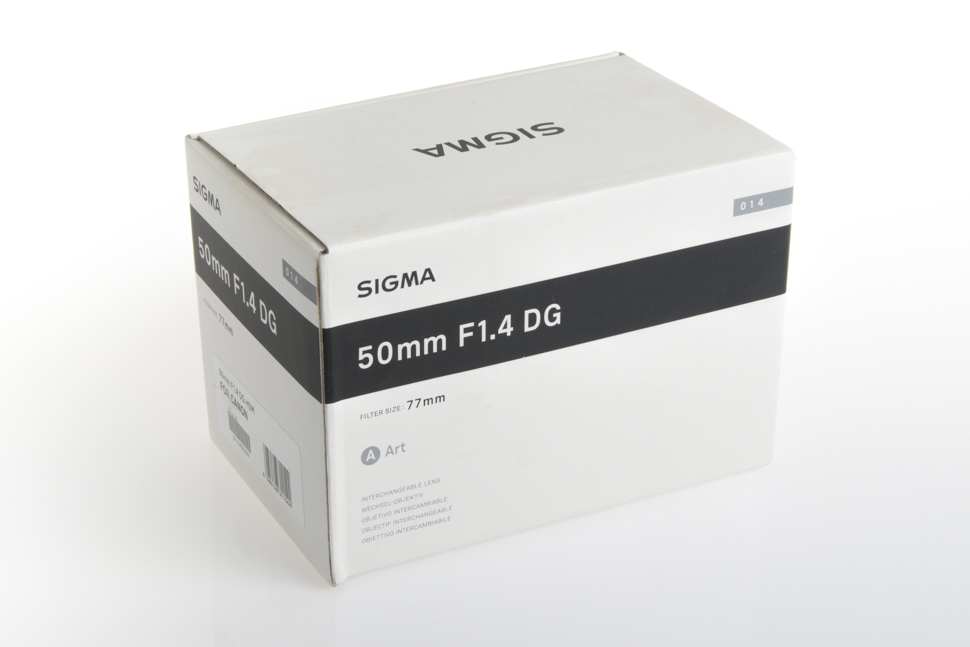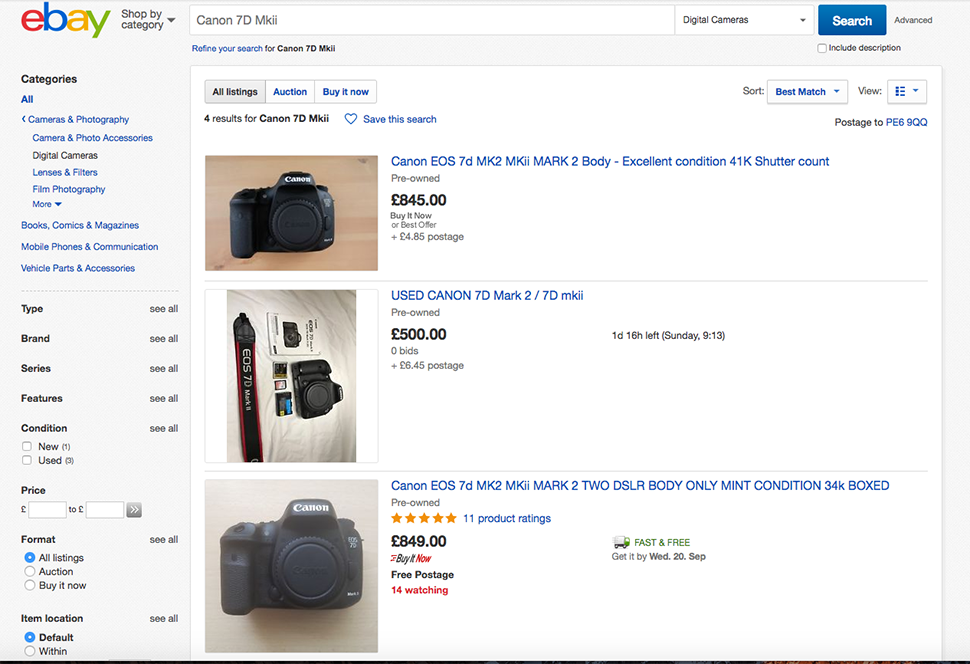10 things you must do when you sell a camera
If you want to get the most money for your kit, make sure to follow these tips

While it’s true that the most important tools for a photographer are a creative eye and a head for composition, there’ll likely come a time when your skills will improve to the point that you'll outgrow your camera's capabilities.
Cameras – and lenses, for that matter – are not small investments, so it’s also likely that you'll wish to sell your old camera in order to upgrade to a new model.
Selling photography gear can prove to be something of a minefield, and taking the wrong route could result in you not receiving what your old equipment is worth. Just like when you sell an old car, however, taking the right approach to presenting your camera to potential buyers will stack the odds of getting a top price well in your favour.
So, if a new DSLR or lens has caught your eye and you’re ready to sell up and upgrade, it could quite literally pay to take a minute and read these top tips on how to sell your gear. From the moment you initially buy to the moment you sell, here is what you need to do.
Read more: The best full-frame DSLRs in 2017

1. Always keep the box
Whether it's a camera, lens or something else you might want to sell in the future, this tip starts when you first buy a product.
Keeping the box always results in being able to demand a higher fee for your gear. Why? Well, imagine there are two cameras on a table in front of you: one is in a pristine box and the other stuffed into an old shoebox with some bubble wrap. It’s pretty obvious which one would receive the most attention!
The best camera deals, reviews, product advice, and unmissable photography news, direct to your inbox!
Don't forget that the more that you keep from the original packaging, the better your chances are of getting more money. In the case of cameras, this includes the manual, software, strap and any cables that came in the box.

2. Protect your kit
Cameras are tools to help you capture the moment, so you shouldn’t wrap them in cotton wool. That said, when you’re not using the camera, try your best to protect it.
Consider getting an LCD overlay to protect the screen from scratches, and make sure all your lens and body caps are always with your kit too.
Keep and transport the camera in a protective bag or case. I always take my wedding ring off before using the camera to avoid scratching the body too.

3. Give your kit a clean
Before advertising your camera, give it a thorough clean as the difference it makes can be significant.
Use a microfibre cloth to remove fingermarks and smears from the LCD screens and viewfinders and brush out any dust or stray specks of sand that have slipped in between gaps of camera body, or the hot shoe mount. A rocket-type blower can also be useful here.
I personally use a Lenspen for many tasks, which is a multi-tool cleaner with a brush at one end and a lens cleaner at the other.

4. Think carefully about where to sell
Today's photographers have a number of choices where they can sell their cameras.
The easiest choice would be to not sell, but to trade in your camera with one of the various websites that have sprung up in recent years. This route is certainly less hassle; you simply post off the gear, wait for approval from the website and then get in-store credit to spend on something new.
However, as the website needs to make a profit, you tend to get a little less than selling privately. You'll also be restricted to buying your new piece of equipment from the same company – not ideal if what you want is elsewhere or out of stock. So, thinking about your next steps in advance is a good idea.
Other options
If you're lucky enough to live close to a shop that deals in second-hand stock, you may want to try there. This offers the convenience of an on-the-spot quotation, and you may be able to get your new product at the same time.
Another option is to list the camera or lens on an internet auction site, but remember that when it sells, the site will take a small commission.
A further option is to use the power of social media to sell your kit. Selling groups on Facebook make it easy to source a buyer, but just remember to play things safe and don’t let any kit go before taking full payment.
5. Be honest with any advertising
It’s simply counterproductive to misrepresent the condition or features of your kit. These days, most people pay with services like Paypal, who will refund the buyer if you try to pull a fast one.
Details potential buyers will wish to know include the model of the camera, the condition, when it was bought and any known defect or damage.
With some cameras, you can give the exact number of actuations (how many shots the cameras has taken), just like checking out miles on a used car. As a rough guide, entry-level cameras are typically rated for around 80,000 actuations, but some pro cameras are rated as high as 200,000 or even higher.
These figures may not apply to your camera if it does not have a mechanical shutter, and not everybody trusts them as they can be falsified. Even so, if you've been honest, and someone does end up buying on the basis of how many shutter actuations your camera has had, you've at least done your bit for transparency.
6. Offer extras to stay competitive
If you’re selling on internet auction sites, there’s no doubt you'll have competition with fellow photographers selling exactly the same product.
One option to attract attention is to lower the price, but then you're losing out. A better alternative is to throw in some extras that you perhaps will no longer need if you are switching cameras or lenses.
Memory cards, extra batteries, microfibre cloths, UV and polarising filters – the more you can throw into the package, the more attractive it will look to potential buyers.
Remember that if you need to post an item out, someone has to pay for this. If you need to add a postage fee to your listing then do so, although an alternative is to include this as part of your main fee, which will allow you to offer free postage – very attractive to buyers.

7. Take some quality images
Advertising your gear isn’t just about wording the description correctly. A tempting advert needs the appropriate imagery, and there are definitely right and wrong ways to approach this.
Simply spreading the gear out over a rug and taking a lazy snap on your smartphone will only result in a lack of interest in your kit. Instead, take a more professional approach by arranging the kit nicely, preferably on a white background that’s lit with studio flash.
If you don’t have a second camera and you have to use your phone, try to shoot your gear using as much natural light as possible before editing the file (using either on Photoshop or an app) to do whatever is necessary for a balanced exposure.
8. Take care with your postage and packaging
When you post off any of your kit, make sure you package it correctly, using an excess of bubble wrap or other protective packaging.
Also make sure the box you pack the kit into is sturdy enough to take any knocks from a sloppy courier and secure the box flaps with strong parcel taps, rather than regular tape.
Lastly, if possible, print out an address label, rather than handwriting it, as any sloppy letters could result in the package being delivered to the wrong address.

9. Get paid safely
Unfortunately, there are people out there who will prey on someone selling a nice camera, so it’s up to you to protect yourself.
If you use an internet auction site, insist on being paid via Paypal, rather than cash, as the buyer has to send the money before you post the gear. This makes it safer all round.
If you have to be paid in cash, make a two-part receipt so there is some sort of proof the product has been handed over.
10. Know your post-sale responsibilities
Remember that there may be something you've overlooked, or you may be obliged to accept a return if something is not as it should be. Understand what your responsibilities are as a seller (as determined in your original listing, or by your selling platform) so that any issues can be rectified swiftly.
Remember that if you use an online auction site, the buyer may be asked to leave feedback on the transaction, so any negative comments may damage your chances of successfully selling further products in future.
Read more: The best mirrorless cameras in 2017
Matty has worked for a number of photographic magazines including Professional Photo, Digital Photo and Digital SLR magazine. He is an accomplished car and lanadscape photographer, who runs his own video production and content creation business in Lincolnshire.

